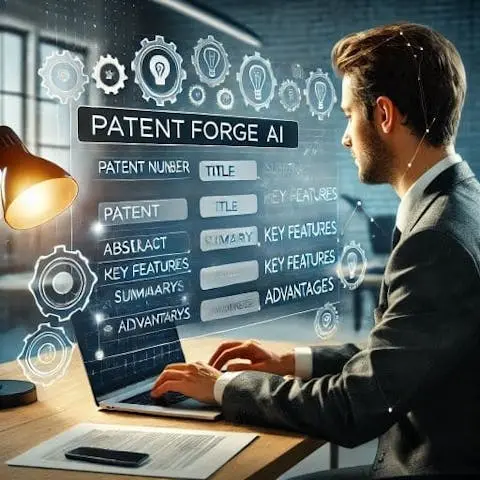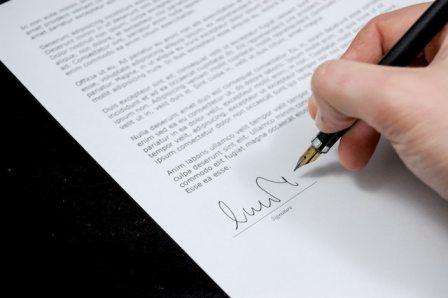How to sell or license patent? – Patent commercialization in Canada
How to sell or license a patent in India: Understand the commercial potential of your invention, create effective marketing materials, identify industries interested in your patent, communicate its value and benefits efficiently, find relevant industries, contact decision-makers, select the right buyer or licensee through negotiations, create necessary documents and agreements to ensure a valid and registered patent license.
Table of Contents
- How to sell or license patent? – Patent commercialization in Canada
- What if, everything you needed to commercialize your patent is ready for you in… few minutes ?
- Book : “How to make money with your patent”
- Licensing your patent to a business:
- Selling your patented invention to a business
- Building business around patented invention
- How patents are valued in Canada
- Procedure to sell or license (commercialize) a patent
- Stage 1 : commercial potential and marketing material
- Stage 2: finding relevant industries and businesses
- Stage 3: Selecting right buyer or license
- Documents , Agreements in Patent commercialization

Once you witness the most satisfying moment of your research and development (R&D) efforts by receiving a Granted Patent for your invention, the very next thought you may have is:
How to sell patent or license patent in Canada?
(as the matter of fact, even patent-pending or patent applications that are not yet granted can also be taken forward with commercialization activity) for simplicity you may compare your intellectual property that is granted patent with a tangible property like a building; How do we monetize a building?
- We can rent it
- We can sell it
- We can use it for our own purpose
Similarly, we can commercialize Patent (Intellectual property) in the following ways:
- We can license our Patent to other business and receive royalty payments
- We can sell our patent to other business for a lump sum amount
- And we can use our patent for building a strong business around it as it would protect us from competition
How to get highest value for my patent in Canada ? How to do patent commercialization selling or licensing in Canada ?
What if, everything you needed to commercialize your patent is ready for you in… few minutes ?
You can start reaching the right buyers in minutes and watch your patent generate revenue in days.

visit our detailed page on How to get highest value for my patent in Canada ? How to do patent commercialization selling or licensing in Canada?
Book : “How to make money with your patent”
How to license, sell, or commercialize your patented invention and earn significant profits
Author: Mr. Prasad Karhad
Link for the book on Amazon: https://www.amazon.ca/dp/B0CSPJXRZ5
Dear Patent owner,
Picture this: You’ve just received the news that your patent has been granted. It’s a moment of triumph, a feeling of accomplishment, and a stamp of validation from the patent office. But as you hold that patent, the obvious question would be “What next?” How do I turn this paper proof of my ingenuity into a stream of steady income?
- What the true potential of my patent is? How do I unlock its real value?
- Who would be interested in buying or licensing it?
- How do I approach and engage the right businesses or firms?
- How can I get appointments & meetings with key decision-makers?
- What should I include in my presentation, and how do I negotiate effectively?
- How to finalize terms of agreement or contract?
- How do I navigate the intricacies of legal, financial, and patent office procedures?
Most inventors stop at the grant of patent. They hang it on their wall, a symbol of achievement, but they miss out on the real prize. That’s where “How to Make Money with Your Patent” book comes in, a practical, no-nonsense guide crafted for inventors like you who are ready to take the next step.
Transforming Patents into Profits: Every chapter in “How to Make Money with Your Patent” is an answer to your burning questions. With real-life case studies, practical examples, and easy-to-understand language:
Understanding Your Patent: It all begins with a deep understanding of what your patent really signifies. It’s not just a right to exclude others but a beacon attracting potential partnerships and opportunities. What does your patent grant really mean? What are your rights, and how can you protect your invention? Our book starts by unraveling the full meaning and power of your patent.
Evaluating Commercial Potential: Every invention has a market waiting to be tapped. We walk you through methodologies to value your patent, assess the market, and identify the distinctive edge your invention holds. Determining the commercial value of your invention is crucial. The book guides you through assessing its market viability, identifying potential applications, and understanding the competitive landscape.
Identifying Your Market: The right audience can turn your patent from a piece of paper into a goldmine. Our guide helps you identify and understand your target market – who needs your invention and why. Knowing who needs your invention and why is critical. The book offers strategies for effective market research, helping you find your niche and understand customer motivations.
Choosing right businesses: build an ideal patent buyer or patent licensee avatar, aligning your patent with business strategy of licensee. The book helps you understand ideal business partner or licensee. Who are they? What do they need? And how does your invention fit into their strategy?
Communicating Effectively: How do you reach out to potential partners or licensees? The book provides practical advice on call scripts, email templates for setting appointments, scheduling meetings, reaching right decision makers, making the first contact, and preparing for meetings.
Creating a Value Proposition: Your invention is more than just a product; it’s a solution. We guide you in crafting a value proposition that highlights the unique benefits of your invention, resonating with the needs of the market. Learn to communicate the unique benefits of your invention compellingly. The book teaches you how to create marketing materials that capture attention and convey your message effectively.
Negotiation, agreements and contracts: The deal is in the details. From preparing for negotiations to understanding licensing agreements, our book empowers you to navigate these waters with confidence. Negotiating terms and agreements can be daunting. The book demystifies this process, offering insights into preparing for licensing meetings, handling objections, and steering towards successful outcomes.
Other ways to make money: Beyond licensing, there are myriad ways to monetize your patent. We explore these avenues, providing you with a broader perspective and more options. There’s more than one way to monetize a patent. The book delves into various strategies, including selling your patent or enforcing your rights in case of infringement.
Legal and Financial Insights: With great innovation comes great responsibility. We dive into the legal and financial aspects of patent monetization, ensuring you’re well-versed in compliance and smart financial planning. The book also covers the legal aspects of patent monetization, from understanding the Indian Patent Act to drafting effective agreements and ensuring compliance.
Real-World Insights and Practical Tools: What set this book apart are the real-life case studies, examples, and templates that provide a practical perspective. These resources are invaluable, offering a glimpse into the successes and challenges faced by others and teaching lessons that can be applied to your own journey.
Don’t let your patent just be a certificate on the wall. Turn it into a source of income and opportunity. Order your copy of “How to Make Money with Your Patent” now and take the first step towards realizing the financial potential of your innovative creation.
Amazon Link for Book https://www.amazon.ca/dp/B0CSPJXRZ5
A short video about the book “How to Make Money with Your Patent”
Commercialization of patent or making money with patent is the golden time frame of patent life cycle where you get paid for your efforts taken for research and development, filing patent and going through the complete procedure till the grant of patent.
There are different ways to make money from your patented invention.
Licensing your patent to a business:
This is the way preferred by most inventors who come from a technical background and who are also owners of the patent, in this option you license your patented invention to an existing business for whom your invention would be a profitable venture and after every sale made or after a fixed time interval you would be paid royalties for your patent.
This is the most passive form of monetary benefit your would be receiving for your patent. If the company to whom you licensed your patent is significantly large and covers a wider market reach with its products or services, then after each sale (although a fraction of the cost of product) the money made by you would be spectacular if not significant.
The terms of payment and the percentage sharing would be decided on the common agreement between you (patentee) and the company (licensee)
The approach for searching for such a business for licensing is
- doing research and coming up with a list of companies who work in the field of your invention then
- scheduling a meeting with the decision-makers and
- presenting them the plan about how this patented invention can be a good fit in their business and they can see significant growth in profit
the most exciting part of this deal would be the monopoly you and your licensee going to enjoy for your patented invention !!!
in other words, “when a business sees that licensing patented invention from you would be profitable and moreover the competitors cannot compete with this product or service as it is patented… then companies would be more than willing to work with you almost every time”
Another option would be,
Selling your patented invention to a business
Most of the things discussed in licensing option are applicable here too, the difference being the payment option. Instead of paying on monthly basis or paying royalties behind every sale, the company would be keener to buy out the patent rights from you at a significant one-time price.
In such a case the money offered upfront to sell the patent rights could be significant and it would be your decision whether to negotiate further or accept the offer and sell all rights to the company.
Building business around patented invention
Another very popular way of making money with your patented invention is building a business around the patented invention. Or maybe protecting your existing business and invention by means of patents from the competition.
This path is most rewarding and most traveled by entrepreneurs and business owners… and it is more promising as well as you are in complete control and the amount of money you are going to make is not dependent on an agreement with other party or how well other party does the business after licensing.
Getting funding for your invention
If you have a patent protecting your invention then investors would be keener to listen to you, and most probably would decide to invest with you. The reason being they speculate that if the product is successful, the competitors would not be able to compete as it is protected with a patent, and hence there would be a fair chance that investors would make good return on their investment along with your growth.
On the other hand, there are many entrepreneurs who happen to find an innovative idea while working on some problems go for patent and end up making large sums of money by leveraging patent protection. And not to forget you can make money in one more way that is filing a suit of infringement and if it is proven in court you would be rewarded with reliefs.
All this is applicable if your patented invention has commercial value in the market. That is the main essence of all these monetizing strategies. The patents are as valuable as they are worth in commercial use. In other words, there has to be a commercial value for the invention that you are patenting, there need to be companies, businesses who would potentially want to use your invention and paying you royalties. Or companies who could be interested in buying out your patent if you are willing to sell it.
If this part is missing, that is your invention does not have any commercial value then probably your patent for that invention would also be worthless. The amount of money to be made by patenting your invention completely depends on how much commercially valuable your invention is, and your ability to commercially exploit your patented invention.
What happens when someone uses your patented invention commercially without your permission?
This is called “patent infringement”. It happens when someone (may it be unintentionally) practices and uses your invention for commercial purposes without your consent.
To enforce your patent rights this matter can be taken into court, an experienced patent attorney proves helpful in such matters. The court has the authority to stop the infringement of patent rights. However, it is your major responsibility as a patent owner to continuously keep watch whether anyone infringes on his patent, something called enforcing the patent.
You will be receiving monetary compensation if you can prove in court that your patent is infringed.
How patents are valued in Canada

A patent generates money by following ways:
- When patent is licensed or sold to other business
- When patent is used to build a business, can stop competition, hence get significant profit margins
- When patent is copied / infringed, we win a lawsuit to claim damages from infringing party
And when it comes to evaluation of the patent, there are different techniques used:
Valuation by royalty payment method: in general the royalty ranges from 1% to 5% of price of product or service. And in other ways the royalty is calculated as roughly one fourth of profit made behind each sale. While evaluating a patent by this method, one also needs to consider future sales of product or service till the life of the patent.
Another way, which is less popular is evaluating a patent based on the costs it requires for applicant / inventor to do research, experiment, filing of patent, getting the grant of patent and maintenance cost of patent; the sum of all these costs are considered as approximate value of patent. This is not a preferred method as patent owners would want to achieve greater ROI on their investments on patents.
So, patents are as valuable as they are worth commercially and there are businesses who would like to license it or buy it or there are infingers who would pay the damages upon winning a lawsuit.
Procedure to sell or license (commercialize) a patent
To understand the steps involved in selling or licensing a patent, we first need to be very clear on understanding the following Points:
- What is the exact invention that we got the protection for?
- What are the boundaries of claims of my patent
- What part of my invention is falling in public domain and what exact part is my inventive step and protected by proper claims
- Which industries or sectors would benefit from buying or licensing my patent?
- How this invention would be a commercially viable and good investment for a business that would buy or license it?
- How can I communicate this value that my patent can bring to a business in the shortest possible time and in the most effective manner
- What tools, media files, marketing materials I need to be able to attract buyers or licensing parties for my Patent
- What legal agreements happen when I sell my patent or when I license my Patent
- What is the amount? Or how much money would I be getting if I sell or license my Patent?
let’s understand these points one by one; we will divide these important points into 3 stages.
Stage 1 : understanding the commercial potential and importance of our patented invention and creating the marketing material (emails, ppts, videos documents, etc.) which communicate that value in a systematic manner and in the shortest possible time
Stage 2 : finding relevant industries and businesses who would be interested in licensing or buying your patent and contacting them professionally via email, Linkedin or call
Stage 3 : Meeting / Presentation with interested companies and selecting the one with whom you would like to move ahead for selling or licensing your patent
Stage 1 : commercial potential and marketing material
When we are in the phase of research and development and filing patent, examination, FER, and responses till the grant of the patent we are mostly dealing with the technical part of our invention; however, when we receive the grant of a patent, now our role shifts to understanding the technical aspect as well as understanding the commercial aspect and commercial potential of our invention. The better we understand it the easier it would be to find the right market fit and right business who would want to license or buy our patented invention.
Understanding is one part but the other part is equally or even more important, that is communicating our value to interested companies and businesses. This involves specific skills like:
- communication skills (written and verbal)
- marketing skills
- selling skills
- negotiation skills and
- An important skill of Talking to higher authorities like CEO, CTO, R&D head and decision-makers of businesses
Hence combining all of the above skills, we need to create the best possible representation of our invention for the firms which might be interested in buying or licensing our patent.
we need to create the best representation of our patented invention which is short, easy to understand, clearly communicates its value and benefits to business and which helps decision-makers to decide on whether to proceed with this initiative

This is achieved via multiple mediums like
- a perfect email copy explaining our invention
- a short but complete presentation explaining technical details and potential of our invention
- a short video or animation explaining invention (this is optional)
- a decent script for calling for appointment/visit with decision-makers
Now, as an inventor or research scientist, or technology person you may not have all these skills necessary for succeeding in Stage 1 of patent commercialization;
Hence, IPR firms / Patent attorney firms offer patent commercialization services to support inventors and patent owners with the right skills on board, your patent would be best represented to the right decision-makers who would be a potential licensee and would be taking the deal ahead if they are interested in your patent.
Stage 2: finding relevant industries and businesses
Based on the work done in stage 1, we do a comprehensive research of industries where our invention would be valuable.
This search involves
- identifying products and services which would directly be benefited by our invention or
- some allied products or services where this invention can be a part of package or
- an industry where our invention can create a new and separate market
we would be creating a list of such companies and find out relevant decision makers like CEO, CTO, Research and Development Head, etc…
we devise a plan to contact them via LinkedIn, email, and calls and share our relevant information as created in stage. This is a continuous process till we find the right buyer or a licensee for our patent
Stage 3: Selecting right buyer or license
With the continuous efforts from stage 2, we would be getting responses for our communications from interested parties/companies, and in the next step, we would be visiting or (discussion over video conference) with the decision-makers and their team.
This is where the discussion about technical details of the invention and commercial viability of the invention (patent) would be discussed to the greater length. This may require multiple visits, discussions and a lot of offers and counteroffers may take place when we consider selling or licensing our patent.
And then there would be a point where both parties (you and the interested party) would agree to a one-time lump sum price or per sale royalty payment or any combination thereof. and then comes the most important part in patent commercialization…
Documents , Agreements in Patent commercialization
Based on stage 3 of our patent commercialization process we need to create relevant documents and agreements as below :
- Patent license agreement (if we are licensing patent)
- Term sheet document (terms of the agreement)
- Deed of assignment of Patent (If we are selling patent)

Furthermore,
There are different types of patent licensing and these types have their own pros and cons:
- Exclusive License
- Non-exclusive License
- Sub-license
- Cross License
- Compulsory License etc.
to understand all of this you may place an inquiry here and our team member would help you out with your questions and the most suitable solution to your specific requirement.

